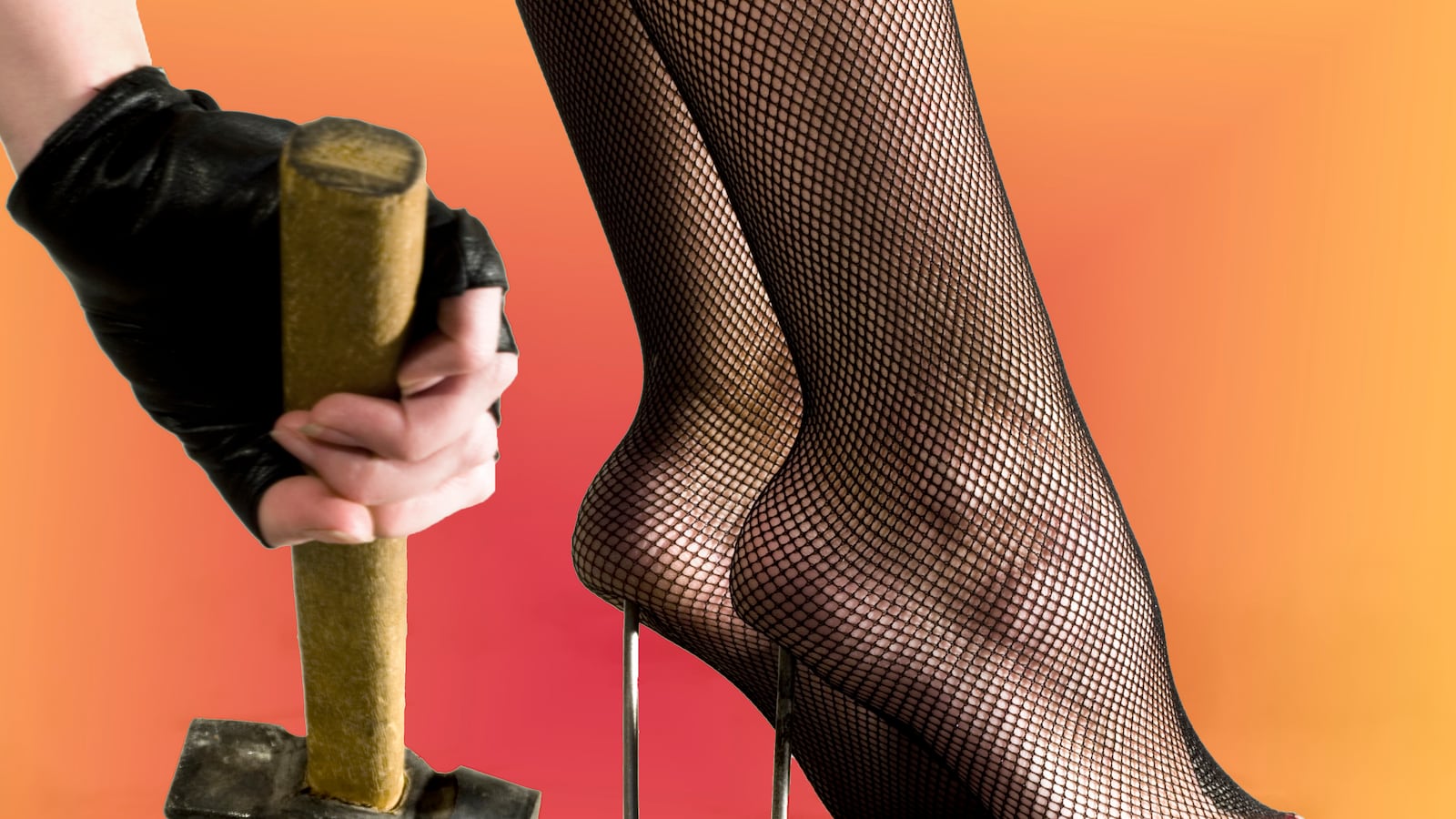It might sound like something out of Mad Men, but a woman who was working as a temporary receptionist at a British accounting firm has alleged that when she turned up for her new job last December in flat shoes, she was told the firm's dress code said she had to wear a two-to-four-inch heel and she should go out and buy some.
When she refused—and pointed out that her male colleagues were not required to do the same—she was “laughed at and told to go home without pay,” she said, during a phone call with Radio London.
Nicola Thorp, 27, a temp and part-time actress, has now set up a petition campaigning to make it illegal to force women to wear heels at work, which has attracted well over the 100,000 signatures needed to force the issue to be considered by parliament.
“I was expected to do a nine-hour shift on my feet escorting clients to meeting rooms. I said, ‘I just won’t be able to do that in heels,’” she said.
When she asked if a man would be expected to do the same shift in heels, she said she was laughed at and told to go home without pay.
“I said, ‘If you can give me a reason as to why wearing flats would impair me to do my job today, then fair enough,’ but they couldn’t,” she told BBC Radio London.The company, PwC (which, amusingly enough, sponsors a blog devoted to equality at work entitled the Gender Agenda) told the Financial Times that it does not have a clause in its dress code about high heels, and that this was applied by an outsourcing company, Portico, which supplies its secretarial staff.
Outsourcing firm Portico said Ms. Thorp had “signed the appearance guidelines” but later bowed to pressure and said it was changing its guidelines.
Simon Pratt, managing director at Portico, said the shoes worn on the day did not adhere to a number of style requirements, such as the lack of embellishment, and that she was not just asked to change shoes because of the lack of heels.
But he told the BBC that the firm was “committed to being an inclusive and equal opportunities employer” and actively embraced “diversity and inclusion within all our policies.”
“We are therefore making it very clear that with immediate effect, all our female colleagues can wear plain flat shoes or plain court shoes as they prefer.”“We have taken on board the comments regarding footwear and will be reviewing our guidelines,” he added.
Higher heels bring with them the additional “trip and fall” risks, as well as long-term back pains. Some women reportedly have had botox injections into their feet, to allow them to continue walking in them.
The controversy comes just days after the friend of a waitress in a Canadian diner shared a picture of her pal’s bloody feet on Facebook after she was forced to work in high heels and lost a toe nail. Freelance makeup artist Nicola Gavins posted a snap of her friend’s bloody toes after her work shift at Joey Restaurants in Edmonton, Canada.
Gavins informed Facebook users: “Their policy is still that female staff wear heels unless medically restricted…sexist, archaic and totally disgusting policy.”
The news that Portico is changing its policy on its heels may not trigger immediate celebrations from gender-equality activists, however: As the (paywalled) FT notes: “Portico’s dress code for women still specifies that a minimum of five different types of cosmetics must be worn “at all times and regularly re-applied.” It also regulates acceptable colors of nail polish (plum is OK but green is not) and lays down rules for tights (black for darker skin tones and ‘natural’ for everyone else).”





